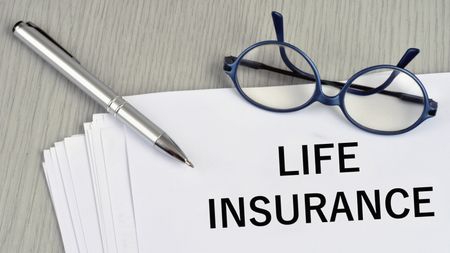Ultra Thin Laptops: Worth the Cost?
These portable computers combine svelte styling and functionality.
The iPad and other tablet computers may be trendy, but for real work you still need a keyboard. If you crave the iPad 2's compact design, an ultra-thin laptop is a more practical alternative. Two products come to mind. Apple's MacBook Air is a wisp of a clamshell computer that, when closed, is no thicker than a college-rule notebook. And Samsung's Series 9 laptop, the Air equivalent for Windows users, is equally sylphlike. Both laptops are stunners, but each will run you well over a grand.
When introducing the latest MacBook Air in October 2010, Apple CEO Steve Jobs asked: "What would happen if a MacBook and an iPad hooked up?" The answer: A thin-and-light Mac that's not only great to look at, but also starts instantly, has excellent battery life, and shuns a traditional hard disk and CD drive. Jobs called the Air "the future of notebooks," and he's probably right.
Sincere flattery. Samsung's Series 9 may be a knockoff of the Air, but it's a lovely imitation. Its curvy, black duralumin (an aluminum alloy) case is stronger than the plastic shells found on cheaper laptops. Samsung claims its "aircraft grade" metal has twice the strength of standard aluminum -- an apparent dig at the MacBook Air's aluminum shell.

Sign up for Kiplinger’s Free E-Newsletters
Profit and prosper with the best of expert advice on investing, taxes, retirement, personal finance and more - straight to your e-mail.
Profit and prosper with the best of expert advice - straight to your e-mail.
We didn't stress-test our demo models, but you can bet that both are sturdier than your average notebook -- just don't drive nails with them. Both are impossibly thin, too. When closed, the MacBook Air measures 0.68 inches at its widest point; the 9 Series is only 0.64 inches. Each comes with either a 13.3-inch or 11.6-inch display. The 13.3-inch models weigh just less than 3 pounds; the 11.6-inchers are a bit lighter at 2.3 pounds.
No more CDs. The ultra-thins' design is made possible by eliminating the optical-disc drives that bulk up most laptops. Replacing the standard hard drive is a solid-state drive that, like in the iPad and iPhone, uses flash memory to store documents, photos and videos. As for the lack of a disc drive, well, when was the last time you used one? Downloadable software, streaming videos and browser-based apps have quickly gone mainstream, making CDs and DVDs increasingly superfluous.
Little details make these laptops special. The MacBook Air and 9 Series each have a full-size keyboard with an ambient light sensor; if you're working in a darkened room, the keyboard lights up automatically. An instant-on feature is handy for picking up where you left off -- right in the middle of an e-mail, for instance -- without having to wait for the computer to wake up from its nap.
As you'd expect with such slim machines, battery life is very good: up to seven hours between charges, although five to seven hours is a more realistic expectation. And you'll love the silence -- no whirring fans or spinning drives.
Worth it? Premium portables, of course, command premium prices. The 13.3-inch MacBook Air is $1,300 with a 128-gigabyte solid-state drive (SSD) or $1,600 with a 256GB SSD. The 13.3-inch 9 Series is $1,650 with Windows 7 Home Premium or $1,700 with Windows 7 Professional. It has a 128GB SSD -- half the storage of a comparably priced Air -- but twice the memory (4GB versus 2GB). The 11.6-inch MacBook Air is $1,000 (64GB) or $1,200 (128GB). The comparable Series 9 with 64GB of storage is $1,200 (there is no 128GB model). Before you marvel that Apple has the lower-cost models, remember that Apple never discounts prices, and Samsung inevitably does.
So which super-skinny laptop is best? We call it a draw. For everyday tasks, the MacBook Air and 9 Series perform similarly, and neither is a barnburner built for demanding chores such as 3-D gaming and video editing.
Get Kiplinger Today newsletter — free
Profit and prosper with the best of Kiplinger's advice on investing, taxes, retirement, personal finance and much more. Delivered daily. Enter your email in the box and click Sign Me Up.
-
 Stock Market Today: Dow Sinks 715 Points as Inflation Unrest Grows
Stock Market Today: Dow Sinks 715 Points as Inflation Unrest GrowsInflation worries are showing up in both hard and soft data.
By Karee Venema Published
-
 What the Senate's Vote to Repeal CFPB Bank Overdraft Fees Cap Means For You
What the Senate's Vote to Repeal CFPB Bank Overdraft Fees Cap Means For YouThe Senate voted to overturn the Consumer Financial Protection Bureau's cap on overdraft fees. Here's what you need to know.
By Sean Jackson Published
-
 Roth IRA Contribution Limits for 2025
Roth IRA Contribution Limits for 2025Roth IRAs Roth IRA contribution limits have gone up. Here's what you need to know.
By Jackie Stewart Last updated
-
 Four Tips for Renting Out Your Home on Airbnb
Four Tips for Renting Out Your Home on Airbnbreal estate Here's what you should know before listing your home on Airbnb.
By Miriam Cross Published
-
 Five Ways to a Cheap Last-Minute Vacation
Five Ways to a Cheap Last-Minute VacationTravel It is possible to pull off a cheap last-minute vacation. Here are some tips to make it happen.
By Vaishali Varu Last updated
-
 How to Figure Out How Much Life Insurance You Need
How to Figure Out How Much Life Insurance You Needinsurance Instead of relying on rules of thumb, you’re better off taking a systematic approach to figuring your life insurance needs.
By Kimberly Lankford Last updated
-
 Amazon Big Deal Days Is Coming! We’ve Got All the Details
Amazon Big Deal Days Is Coming! We’ve Got All the DetailsAmazon Prime To kick off the holiday season with a bang, Amazon Big Deal Days runs Tuesday, October 8 and Wednesday, October 9.
By Bob Niedt Last updated
-
 How to Shop for Life Insurance in 3 Easy Steps
How to Shop for Life Insurance in 3 Easy Stepsinsurance Shopping for life insurance? You may be able to estimate how much you need online, but that's just the start of your search.
By Kaitlin Pitsker Last updated
-
 Five Ways to Shop for a Low Mortgage Rate
Five Ways to Shop for a Low Mortgage RateBecoming a Homeowner Mortgage rates are high this year, but you can still find an affordable loan with these tips.
By Daniel Bortz Last updated
-
 Retirees, It's Not Too Late to Buy Life Insurance
Retirees, It's Not Too Late to Buy Life Insurancelife insurance Improvements in underwriting have made it easier to qualify for life insurance, which can be a useful estate-planning tool.
By David Rodeck Published